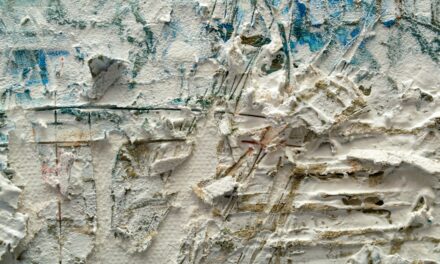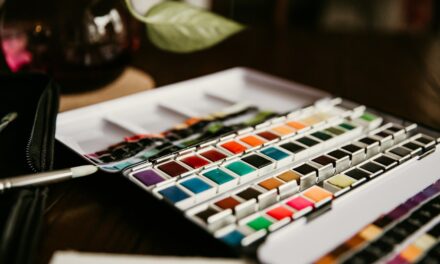In the realm of pastel art, the ability to erase and correct is not merely a convenience; it is an essential skill that can significantly enhance the quality of a piece. Unlike other mediums, pastels are inherently forgiving, allowing artists to manipulate their work even after initial application. This flexibility is particularly advantageous for those who may feel daunted by the permanence of other materials.
The act of erasing can serve as a means of refining one’s vision, enabling artists to adjust shapes, alter colours, and redefine forms without the fear of ruining their work. This dynamic process encourages experimentation and spontaneity, which are vital components of artistic expression. Moreover, understanding the nuances of erasing and correcting can lead to a deeper appreciation of the medium itself.
Pastels, with their rich pigments and soft textures, invite a tactile engagement that can be both liberating and challenging. The ability to erase allows artists to explore the interplay of light and shadow, creating depth and dimension in their compositions. It also provides an opportunity to learn from mistakes, transforming what might initially seem like a flaw into a stepping stone towards a more refined outcome.
Thus, mastering the techniques of erasing and correcting not only enhances technical skills but also fosters a more profound connection with the art form.
Summary
- Erasing and correcting in pastel work is crucial for achieving a polished and professional finish.
- Kneaded erasers are gentle and effective tools for making corrections without damaging the paper or the pastel work.
- Soft brushes are essential for blending and smudging pastel colours to create seamless transitions and soft effects.
- Pastel pencils offer precision for making detailed corrections and adding fine lines and details to the artwork.
- Fixatives can be used for layering pastel work and making corrections without smudging or altering the existing colours.
Using Kneaded Erasers for Gentle Corrections
Kneaded erasers are a staple in the pastel artist’s toolkit, prized for their versatility and gentle touch. Unlike traditional erasers that can leave behind residue or damage the paper, kneaded erasers can be shaped and moulded to suit specific needs. Their pliable nature allows artists to pick up excess pastel without disturbing the underlying layers, making them ideal for subtle corrections.
When used correctly, a kneaded eraser can lift colour from the surface while preserving the integrity of the paper, ensuring that the artwork remains intact. To effectively utilise a kneaded eraser, one must first understand its properties. By gently dabbing or rolling the eraser over the area in question, artists can gradually lighten or remove unwanted marks.
This technique is particularly useful for creating highlights or softening edges, as it allows for a delicate touch that maintains the overall composition. Additionally, kneaded erasers can be used to create texture by lifting colour in specific areas, adding an element of dynamism to the piece. As artists become more familiar with this tool, they will find that it opens up new avenues for creativity and expression within their pastel work.
Utilising Soft Brushes for Blending and Smudging
Soft brushes are invaluable tools in pastel work, serving multiple purposes that extend beyond mere application. One of their primary functions is blending, which can create seamless transitions between colours and tones. By gently sweeping a soft brush across the surface of the pastel, artists can soften harsh lines and create a more cohesive look.
This technique is particularly effective when working with portraits or landscapes, where subtle gradations are essential for achieving realism. The softness of the brush allows for a delicate touch that can enhance the overall aesthetic without overwhelming the composition. In addition to blending, soft brushes can also be employed for smudging, which adds an element of spontaneity to the artwork.
By using a brush to manipulate the pastel on the paper, artists can introduce an organic quality to their work that feels alive and dynamic. This technique encourages experimentation; artists may find that unexpected results can lead to new ideas and directions in their pieces.
Ultimately, mastering the use of soft brushes can elevate an artist’s pastel work, allowing for greater depth and nuance.
Employing Pastel Pencils for Precise Corrections
Pastel pencils are an excellent addition to any pastel artist’s arsenal, offering precision that traditional pastels may lack. These pencils allow for detailed corrections and fine lines that can enhance the overall composition without overwhelming it. When working on intricate areas such as facial features or delicate textures, pastel pencils provide the control needed to achieve accuracy.
Their pointed tips enable artists to add highlights or refine edges with ease, making them an indispensable tool for detailed work. Furthermore, pastel pencils can be used in conjunction with other pastel techniques to create layered effects. For instance, after applying a base layer with soft pastels, artists can use pastel pencils to add intricate details on top.
This layering technique not only enhances depth but also allows for corrections in areas where more precision is required. The versatility of pastel pencils means they can be used for both corrections and enhancements, making them a valuable resource in any pastel artist’s toolkit. As artists become adept at using these pencils, they will find that they can achieve a level of detail and refinement that elevates their work to new heights.
Exploring the Use of Fixatives for Layering and Corrections
Fixatives play a crucial role in pastel work, particularly when it comes to layering and making corrections. These sprays help to set layers of pastel on the paper, preventing smudging and allowing artists to build up their work without fear of disturbing previous layers. By applying a light coat of fixative between layers, artists can create a stable foundation that supports further application.
This technique is especially beneficial when working on larger pieces or when using multiple colours that require careful layering. In addition to aiding in layering, fixatives can also assist in making corrections. If an area becomes too saturated or if an artist wishes to lighten certain sections, applying a fixative can help to set the existing layers before making adjustments.
Once the fixative has dried, artists can use kneaded erasers or soft brushes to lift or blend colours without compromising the integrity of the underlying layers. This ability to correct while maintaining stability is one of the many advantages of incorporating fixatives into pastel work. As artists experiment with different types of fixatives—whether workable or final—they will discover how these products can enhance their creative process.
Experimenting with Sandpaper and Stiff Brushes for Texture Corrections
For those looking to add texture or make corrections in their pastel work, sandpaper and stiff brushes offer unique possibilities. Sandpaper can be used to create interesting textures by gently rubbing it against the surface of the paper after applying pastels. This technique allows artists to achieve a variety of effects, from rough surfaces to smoother transitions depending on how much pressure is applied.
Additionally, sandpaper can be used to sharpen pastels into finer points for detailed work or corrections. Stiff brushes also play a significant role in texture corrections. Unlike soft brushes that blend and smudge, stiff brushes can be used to scrub or lift colour from the surface more aggressively.
This technique is particularly useful when an artist wishes to remove excess pastel or create distinct lines and patterns within their work. By experimenting with both sandpaper and stiff brushes, artists can discover new ways to manipulate texture and form in their pieces. The combination of these tools encourages exploration and innovation, allowing for a more dynamic approach to pastel art.
Knowing When to Stop: Over-Erasing and Over-Correcting in Pastel Work
One of the most challenging aspects of working with pastels is knowing when to stop—when enough is enough in terms of erasing and correcting. While it is tempting to continue refining a piece until every detail feels perfect, over-erasing can lead to a loss of vibrancy and depth in the artwork. Pastels are designed to be layered; excessive correction may strip away essential colour and texture that contribute to the overall impact of the piece.
Therefore, developing an intuitive sense of balance is crucial for any artist working with this medium. To avoid over-correcting, artists should take regular breaks during their creative process to step back and assess their work from a distance. This practice allows for a fresh perspective on what truly needs adjustment versus what may simply be a matter of personal preference.
Additionally, setting specific goals for each session—such as focusing on one area or aspect—can help maintain clarity and prevent unnecessary alterations. Ultimately, learning when to stop is as much about trusting one’s instincts as it is about technical skill; it requires practice and self-awareness.
Seeking Inspiration from Master Pastel Artists for Erasing and Correcting Techniques
Inspiration often comes from observing the techniques employed by master pastel artists throughout history. Artists such as Edgar Degas and Mary Cassatt have left behind legacies that showcase not only their mastery of colour but also their innovative approaches to erasing and correcting within their works. By studying these masters, contemporary artists can glean valuable insights into how they navigated challenges within their own creations.
Visiting galleries or studying reproductions of these artists’ works can reveal how they utilised various tools and techniques for corrections—whether through strategic layering or subtle adjustments with erasers and brushes. Additionally, many modern pastel artists share their processes through workshops or online platforms, providing opportunities for learning directly from those who have honed their skills over time. Engaging with this wealth of knowledge not only enriches one’s understanding but also inspires new approaches to erasing and correcting in pastel work.
In conclusion, mastering the art of erasing and correcting in pastel work is essential for any artist seeking to refine their craft. By employing various tools such as kneaded erasers, soft brushes, pastel pencils, fixatives, sandpaper, and stiff brushes, artists can navigate the complexities of this medium with confidence. Moreover, understanding when to stop and seeking inspiration from master artists further enhances this journey towards artistic excellence.
As one continues to explore these techniques, they will undoubtedly discover new dimensions within their pastel creations that resonate with both themselves and their audience.
For more insights into the world of art, you may want to explore an introduction to the painting “Self-Portrait” by Albrecht Dürer. This article provides a detailed analysis of the renowned artist’s self-portrait and delves into the techniques and symbolism used in the artwork. It offers a fascinating glimpse into the mind of the artist and the historical context in which the painting was created. To read more about this captivating piece, visit here.



